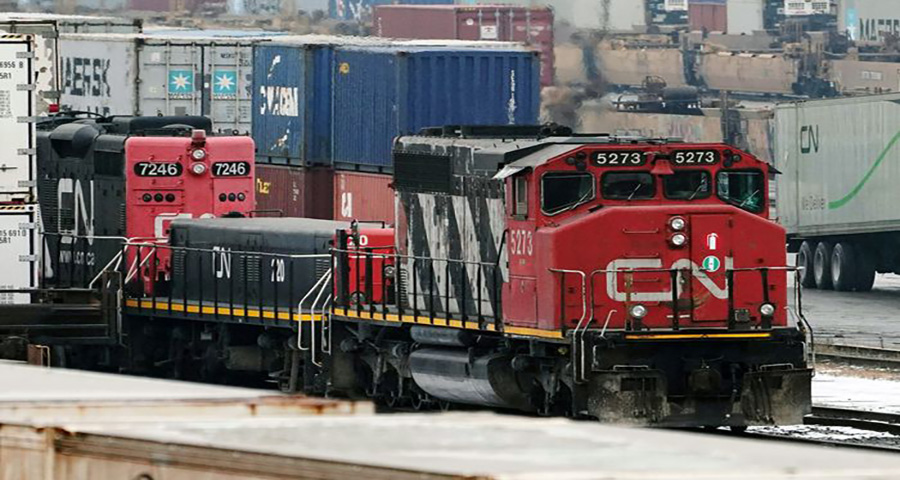Trump’s Tariff Policies Spark Global Uncertainty
KEY POINTS
- Trump considers 10% China tariff by Feb. 1, though he has expressed a preference to avoid such measures.
- Canadian Prime Minister vowed retaliation if Trump imposes 25% tariffs February 1, threatening $113.8 billion in cross-border trade, including $24.3 billion in U.S. chemical imports.
- U.S. tariff uncertainty complicates Sourcing budgets.

President Trump’s tariff proposals are prompting Sourcing executives to evaluate their exposure to increased economic uncertainty and complex trade barriers.
Industries across the globe are feeling the ripple effects of Trump’s tariff policies. Chemical manufacturers and freight rail operators in North America are preparing for potential disruptions, while European and Chinese exporters monitor the situation with growing unease.
President Trump has suggested a 10% tariff increase on Chinese imports by February 1, aimed at strengthening the U.S. position in negotiations over intellectual property rights and trade imbalances. Despite signaling a tougher stance, Trump described a recent phone conversation with Chinese President Xi Jinping as “friendly” and expressed hope for progress toward a trade deal. “We have one very big power over China, and that’s tariffs. They don’t want them, and I’d rather not have to use it, but it’s a tremendous power over China,” Trump said.
President Trump has also raised concerns about China’s expanding influence in the Western Hemisphere, particularly at the Panama Canal, where Chinese state-owned companies play a significant role. He described their operations as a potential threat to U.S. national security, though Panamanian officials have downplayed these fears, highlighting the economic benefits of Chinese investments.
Meanwhile, Canadian Prime Minister Justin Trudeau vowed to “respond robustly” with retaliatory measures if President Trump proceeds with plans to impose 25% tariffs on Canadian imports by February 1, denouncing the proposed tariffs as “unfair”. The announcement has raised concerns across North America’s chemicals and freight rail industries, which are integral to cross-border trade, having transported $113.8 billion worth of goods across the U.S.-Canada border in 2023 (15% of total trade). Chemicals are a key trade component, with the U.S. importing $24.3 billion in chemicals from Canada last year, accounting for 18.1% of total chemical imports. Railroads play a critical role, moving high-value goods like vehicles, plastics, and mineral fuels safely across borders, while 80% of chlorine used to disinfect West Coast drinking water comes from Canada. “The U.S.-Canada chemical trade relationship supports other trades,” stated Eric Byer, CEO of the Alliance for Chemical Distribution.
President Trump also signaled 25% tariffs on imports from Mexico and has criticized EU trade practices as “very unfair.” Speaking at the World Economic Forum in Davos, Switzerland, he cited barriers such as agricultural subsidies and limited market access for U.S. goods. “They make it very difficult to bring products into Europe, and yet they expect to be selling—and they do sell—their products in the United States. So, we have, you know, hundreds of billions of dollars of deficits with the EU, and nobody’s happy with it. And we’re going to do something about it,” Trump said. In December, he warned of escalating tariffs unless the EU increased purchases of U.S. oil and gas, a demand that European officials have cautiously considered.
“You should take action and review your supply chains. Identify where your goods are sourced from and have alternatives.” – Adam Lewis, President of Clearit Customs Brokers.
The healthcare sector is feeling the effects of tariff uncertainty, as executives face challenges forecasting the costs of patient care supplies. Healthcare executives are urgently evaluating manufacturing locations of high-spend product categories as well as alternatives from the USA. Health systems use SRS to evaluate tariff exposure by listing the products made in any country and by bringing product locations into supplier business reviews. If you have not yet tailored SRS to list manufacturing sites for the products you buy, it’s simple to do so if you have a subscription to SRS. Email support@supplyrisk.com for instructions.
For more information, see:
CBS News, Trump holding off on tariffs after Colombia agrees to accept deported migrants on military planes, White House says, January 27
Reuters, Trump says he could reach trade deal with China, calls talk with Xi ‘friendly’, January 24
Supply Chain Dive, Trump eyes 10% China tariff hike by Feb. 1, January 23
CNBC, Trump slams trade relationship with European Union: ‘We have some very big complaints’, January 23
CNBC, Chemicals industry, freight rails brace for Trump tariffs on Canada, Mexico, January 22
CNN, Canada will ‘respond robustly’ if Trump imposes ‘unfair tariffs,’ says PM Trudeau, January 21
Supply Risk Solutions, Trump Proposes 25% Tariffs on Canada and Mexico Starting February 1, January 21
MSN, Why Trump Sees a Chinese Threat at the Panama Canal, and Locals Don’t, January 20
Supply Risk Solutions, Tariff Planning Requires Product Transparency, January 13
The LoadStar, Launch of new tariffs ‘a speeding train’, be ready, US importers warned, January 13
CNN, Canada is preparing to strike back hard with retaliatory tariffs if Trump starts a trade war, January 10
Supply Risk Solutions, U.S. Tariff Plans Bring Urgency to Knowing Product Manufacturing Locations, December 2
Supply Risk Solutions, Tariffs Push Manufacturers to Rethink Supply Chain Strategies, November 15
Supply Risk Solutions, Tariffs Spur Urgency to Understand Product Manufacturing Locations, November 11
Supply Risk Solutions, List the Products You Buy That Are Subject to China Import Tariffs, October 28
White & Case, United States Finalizes Section 301 Tariff Increases on Imports from China, September 17
Supply Risk Solutions, Biden Raises Tariffs on Key Chinese Imports to Bolster U.S. Industries, May 20